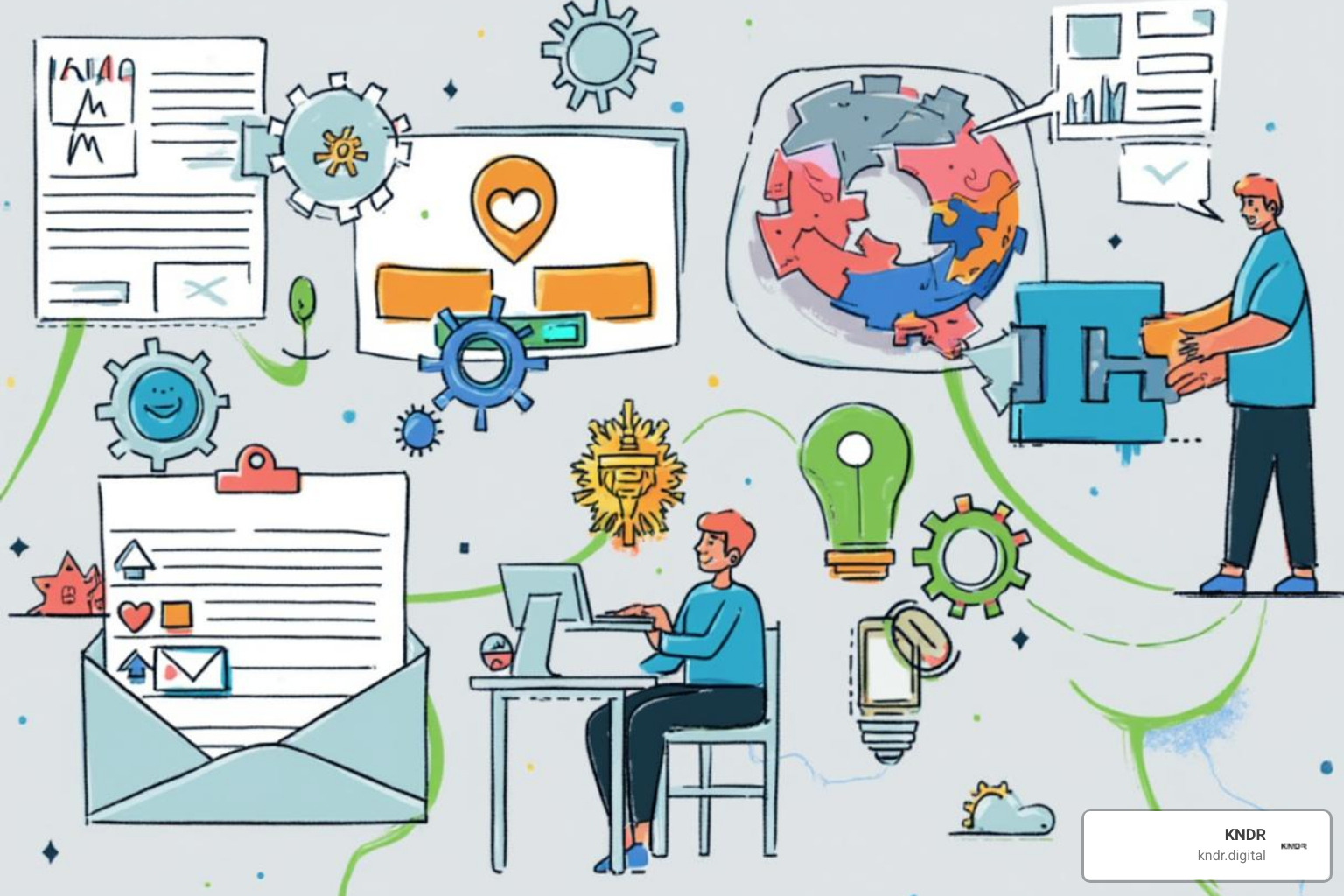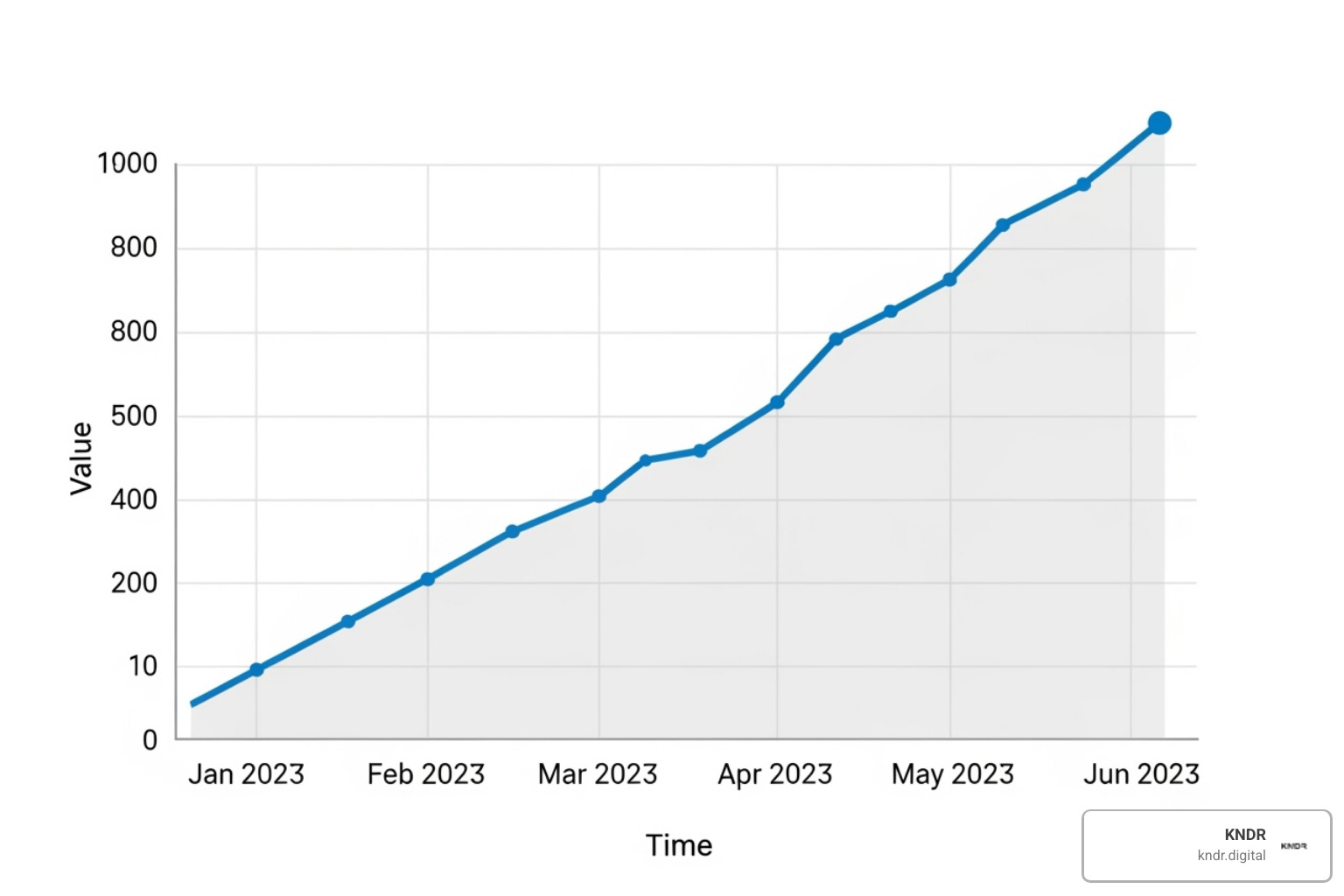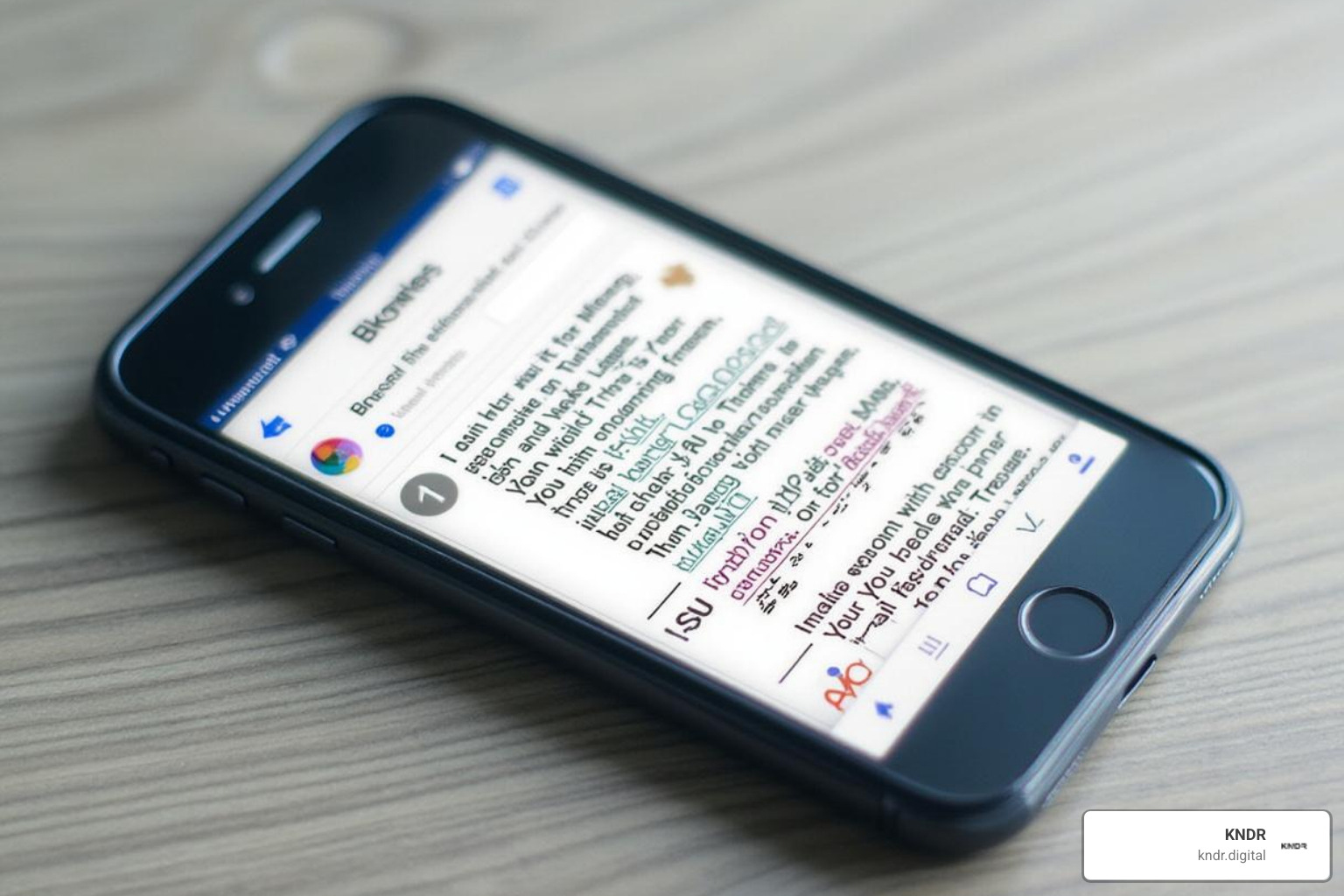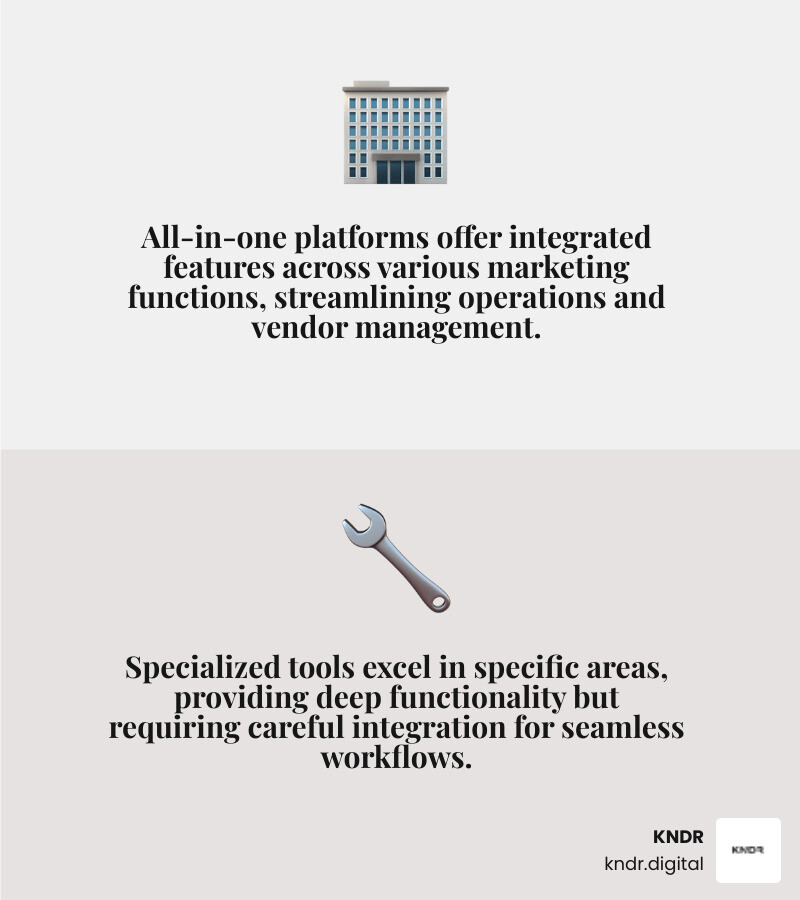Set It and Forget It? How to Automate Marketing for Nonprofits

Introduction: More Mission, Less Manual Work
If you're wondering how to automate marketing for nonprofits, you're in the right place. Marketing automation uses software to handle repetitive tasks, freeing up your team to focus on your mission and making your outreach more effective.
Here's how to automate marketing for nonprofits at a glance:
- Streamline Workflows: Automate tasks like sending emails and scheduling social media.
- Personalize Outreach: Deliver custom messages to supporters based on their actions.
- Improve Engagement: Build automated welcome series, thank-you notes, and re-engagement campaigns.
- Save Time & Resources: Free up your team for strategic work and human connection.
- Gain Insights: Track performance data to understand what works and improve your efforts.
Many nonprofit organizations face a tough challenge: a vital mission, but limited staff and tight budgets. A vast majority—97 percent—of U.S. nonprofits operate on less than $500,000 annually. With 37% of nonprofits struggling with their workload, every minute counts.
Marketing automation helps you do more with less. It ensures your message reaches the right people at the right time, allowing you to scale your outreach and build deeper connections without a bigger team.
For nonprofits ready to implement advanced AI-driven systems, a specialized partner like KNDR can guarantee results and streamline your digital marketing for charities. As the CEO of KNDR.digital, I lead a team focused on AI-powered marketing and digital fundraising, helping organizations rethink how they engage donors and drive change.

How to automate marketing for nonprofits glossary:
Why Marketing Automation is a Game-Changer for Nonprofits
Marketing automation gives your team efficient tools to reach more supporters, more consistently, and drive more impact for your cause.

Marketing automation transforms how you connect with supporters, allowing you to nurture relationships across their entire journey. This "full-funnel" approach ensures consistent, personalized messaging that builds trust and deepens engagement. Instead of generic messages, you can deliver notes based on a supporter's interests and past actions. This provides better data to refine your strategies and allows you to scale outreach without hiring more staff. With 49% of organizations reporting more time for unique tasks after using automation, your team is freed for mission-critical work. For more insights, see our guide on Data Driven Fundraising.
Optimizing the Donor Engagement Funnel
The donor journey is a dynamic engagement funnel. Automation helps guide supporters through each stage: Visitor, Prospect, Lead, Engaged Donor, Advocate, and Ambassador. Tailor communication to each stage using lead scoring to send the right message at the right time. A new visitor might get a welcome series, while a lapsed donor could receive a re-engagement message. Automated workflows guide supporters on personalized journeys, deepening their connection to your work. Learn more with our Implementing AI for Donor Retention The Complete Playbook.
Overcoming Resource Limitations
Most nonprofits have tight budgets and small teams. Marketing automation is a "force multiplier," helping you do more with less. It saves time by handling repetitive tasks like thank-you emails and social media scheduling. This frees your team to focus on strategy and relationship-building, reducing human error and ensuring supporter data is always current for personalized outreach. It's about working smarter, not harder. To explore these efficiencies, visit our Nonprofit Automation Agency page.
How to Automate Marketing for Nonprofits: A 6-Step Strategy
Implementing marketing automation can be broken down into simple, manageable steps that create a smooth journey for your supporters.
Here’s our 6-step strategy for how to automate marketing for nonprofits:
- Set Clear, Measurable Goals
- Map Your Audience and Donor Personas
- Build Your Automated Workflows
- Create and Personalize Your Content
- Test, Refine, and Launch
- Monitor Performance and Optimize
Following this path ensures your automation efforts are focused and effective. For more insights, see our Digital Marketing Strategy For Fundraising guide.
Step 1: Set Clear, Measurable Goals
Define what you want to achieve with SMART goals (Specific, Measurable, Achievable, Relevant, Time-bound). Examples include increasing fundraising revenue, boosting volunteer sign-ups, or improving donor retention. Clear metrics help measure the value automation brings.
Step 2: Map Your Audience and Donor Personas
Understand your audience by segmenting them to send relevant, personal messages. Group supporters by demographics, donation history (new, regular, lapsed), engagement level, or relationship type (volunteer, donor). Creating donor personas for these groups helps you craft messages that connect. Our Donor Management Software guide offers more tips.
Step 3: Build Your Automated Workflows
Workflows are automated sequences triggered by supporter behavior, like a donation or subscription. Use them to launch a Welcome Series for new donors, Nurture Campaigns for prospects, or Re-engagement Flows for lapsed supporters. Each step should guide a supporter toward your goal.
Step 4: Create and Personalize Your Content
Personalize content at scale. Craft warm, human, and relevant emails, SMS messages, and social posts that reflect your brand. Use personalization tokens (e.g., {{first_name}}) and dynamic content based on supporter data. Ensure every message has a clear call-to-action (CTA). For tips, see our AI Driven Email Campaigns guide.
Step 5: Test, Refine, and Launch
Test workflows thoroughly before launching. Use A/B testing for subject lines and CTAs, check trigger logic, and run small-scale tests with your team to find errors. Review all content for authenticity to ensure it matches your brand voice. Launch small and scale up as you learn.
Step 6: Monitor Performance and Optimize
Launching is just the beginning. Use your platform's data to see what's working. Track key metrics like open rates, click-through rates (CTR), and conversion rates. Review reports regularly and optimize your campaigns. If an email has a low open rate, test a new subject line. Continuous optimization is key to success. For help with data, see our Top Nonprofit Analytics Platforms Compared For 2025 guide.
High-Impact Automation Examples in Action
With automation, your nonprofit never misses a beat—every thank you is timely, every reminder is sent, and every appeal feels personal. Let's look at real-world examples of how these strategies create tangible benefits for your mission.

These automations work behind the scenes to save hours and ensure your communication is timely and effective, which is crucial for building strong donor relationships. See how AI can boost your efforts in our guide to AI Nonprofit Fundraising.
Automating the Welcome and Onboarding Experience
An automated welcome series makes new supporters feel valued from their first interaction.
- New Donors: Send an immediate thank-you email with an impact story. Only 32% of nonprofits do this, a huge missed opportunity to build a relationship.
- New Volunteers: Automate a sequence with training materials, shift details, and a warm welcome to ensure they feel supported.
- New Subscribers: Introduce them to your programs with success stories and simple calls-to-action, like following you on social media.
These automations build trust and encourage deeper engagement with your cause.
Boosting Fundraising with Timely Asks
Automation can significantly boost fundraising by ensuring you never miss an opportunity to connect with donors.
- Abandoned Donations: If someone starts to donate but gets distracted, an automated reminder can gently nudge them to complete their gift.
- Recurring Donor Payments: For monthly donors, an automated email or SMS can alert them to an expiring credit card. Only 23% of organizations send these reminders, which can prevent lapses in support and save your team manual follow-up.
- Major Campaigns: For Giving Tuesday and year-end appeals, you can schedule a series of messages to ensure consistent communication when giving is at its peak. Learn More on Giving Tuesday campaigns here.
Automating these communications optimizes your fundraising and maximizes revenue. For more, see our guide on an Automated Donation System.
Streamlining Event and Volunteer Management
Events and volunteers come with a lot of coordination. Automation can lighten the load.
- Event Communications: Instantly send registration confirmations with key details. Follow up with pre-event reminders via email or SMS, and a post-event thank you and survey.
- Volunteer Management: Reduce no-shows with automated shift reminders. When someone applies, an automated follow-up can acknowledge their application and outline the next steps.
These automations improve the experience for participants and volunteers while reducing the administrative burden on your team.
Choosing Your Tech Stack: Key Features to Look For
Choosing the right marketing automation platform is like finding the right pair of shoes for a marathon—it needs to be a perfect fit. You can choose from all-in-one solutions or specialized tools. When deciding, consider these key factors:
- Budget: What can you realistically afford? Look for nonprofit discounts.
- Ease of Use: Is the platform intuitive for your team?
- Integration Capabilities: Can it connect with your existing systems, like your donor database?

The best choice depends on your nonprofit's needs, tech setup, and team comfort. For a comprehensive look at how to how to automate marketing for nonprofits, see our guide on the Best AI Tools For Nonprofits.
Core Communication and CRM Features
At the heart of automation is great communication and relationship management. Your CRM (Constituent Relationship Management) is central to this.
- Email Marketing Tools: You need features to create professional emails, manage lists, and track analytics.
- Contact Segmentation: Essential for grouping your audience by donation history, engagement, or interests to send relevant messages.
- Unified CRM: This should be your "single source of truth," housing all supporter data for consistent, up-to-date information. A strong CRM is vital for Charity Digital Marketing.
- Donor Activity Tracking: Your system should automatically log every interaction, from email opens to donations, to help you understand supporters.
Essential Automation and Analytics Features
Certain features transform a basic tool into a powerful automation engine.
- Visual Workflow Builder: A drag-and-drop interface to easily map out automated supporter journeys.
- Behavior-Based Triggers: Start automations based on supporter actions, like visiting a donation page, to ensure timely communication.
- A/B Testing Capabilities: Test different email versions, subject lines, or CTAs to continuously improve.
- Robust Reporting and Analytics: You need clear, actionable data on campaign performance, conversions, and overall impact. For more, see our guide on AI Nonprofit Fundraising.
Critical Integration and Connectivity
No single tool does everything, so integration is critical for a holistic approach to how to automate marketing for nonprofits.
- Donation Platform Integration: Ensure donation data flows automatically into your CRM to trigger thank-you messages without manual entry.
- Social Media Schedulers: Connect your platform to social media tools to get a complete view of supporter engagement.
- Integration Tools: Use tools that act as "digital glue" to connect different apps, ensuring smooth data transfer across your entire tech stack.
The goal is a connected ecosystem where data flows freely, giving you a unified view of your supporters. For more on this, see our Charity Fundraising Platform guide.
Best Practices and Common Pitfalls to Avoid
"Set it and forget it" is a tempting idea, but mastering how to automate marketing for nonprofits is more like tending a garden than flicking a switch. It requires ongoing care, tweaking, and an understanding of what to do—and what to avoid. This is a key part of managing Charity Digital Change as you adapt and grow.
How to automate marketing for nonprofits while staying personal
A common fear is that automation feels robotic. To avoid this, focus on genuine human connection.
- Avoid robotic language: Ensure your automated messages sound authentic and true to your mission.
- Use segmentation for relevance: Sending messages only to relevant audience segments makes every communication feel custom-made.
- Celebrate donor milestones: Use automation to send a note on a donor's anniversary to build goodwill.
- Maintain your brand voice: Every communication, automated or not, must reflect your nonprofit's personality to maintain trust.
How to automate marketing for nonprofits and remain compliant
When dealing with supporter data, trust is everything. Adhering to data privacy and communication regulations is a legal must-have.
Understand data privacy laws relevant to your supporters, such as the General Data Protection Regulation in the EU or the CAN-SPAM Act rules in the U.S. These laws outline how you can collect, store, and use personal data.
Always get explicit consent before adding people to marketing lists. Every marketing email must include a clear unsubscribe option, and you must honor requests promptly. Ignoring these rules can lead to heavy fines and damage your reputation.
Common Challenges and How to Overcome Them
Implementing automation has surmountable challenges.
- Budget constraints: Many platforms are pricey, but some offer nonprofit discounts or free tiers. Start small and scale up as you see results.
- Lack of technical expertise: Choose user-friendly platforms with visual builders and invest in key staff training.
- Poor data quality: Automation relies on clean data. Prioritize data hygiene by regularly cleaning your CRM and removing duplicates.
- Staff training and adoption: Involve your team in the selection process, provide clear training, and demonstrate time-saving benefits with quick wins to encourage adoption.
Conclusion: Start Automating Your Impact Today
We've covered how how to automate marketing for nonprofits is not about fancy software, but about empowering your mission. It's a superpower for your passionate team, changing repetitive tasks into mission-driven efficiency.
Automation allows you to:
- Multiply your effect: Reach more people and raise more funds without a larger staff.
- Deepen donor engagement: Send personalized, timely messages that make every supporter feel valued, building stronger relationships.
- Save precious time: Free up your team to focus on strategic planning, human connection, and delivering on your mission.
- Make smarter decisions: Use data to constantly learn from and improve your outreach.
The beauty of automation is that it smartly sets systems in place, freeing you to focus on the authentic human connection that makes your work vital. It empowers you to be more consistent, personal, and impactful.
If you're ready to implement advanced, AI-driven systems for your nonprofit, KNDR is here to help. We can guarantee results and streamline your entire digital marketing for charities. Let us help you harness the power of automation to amplify your mission.



